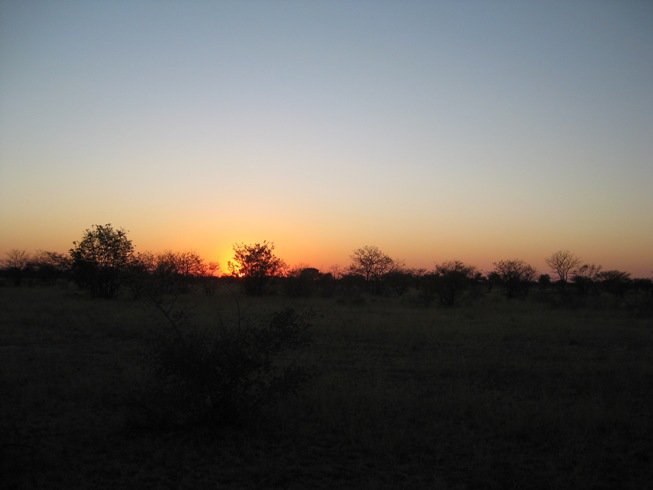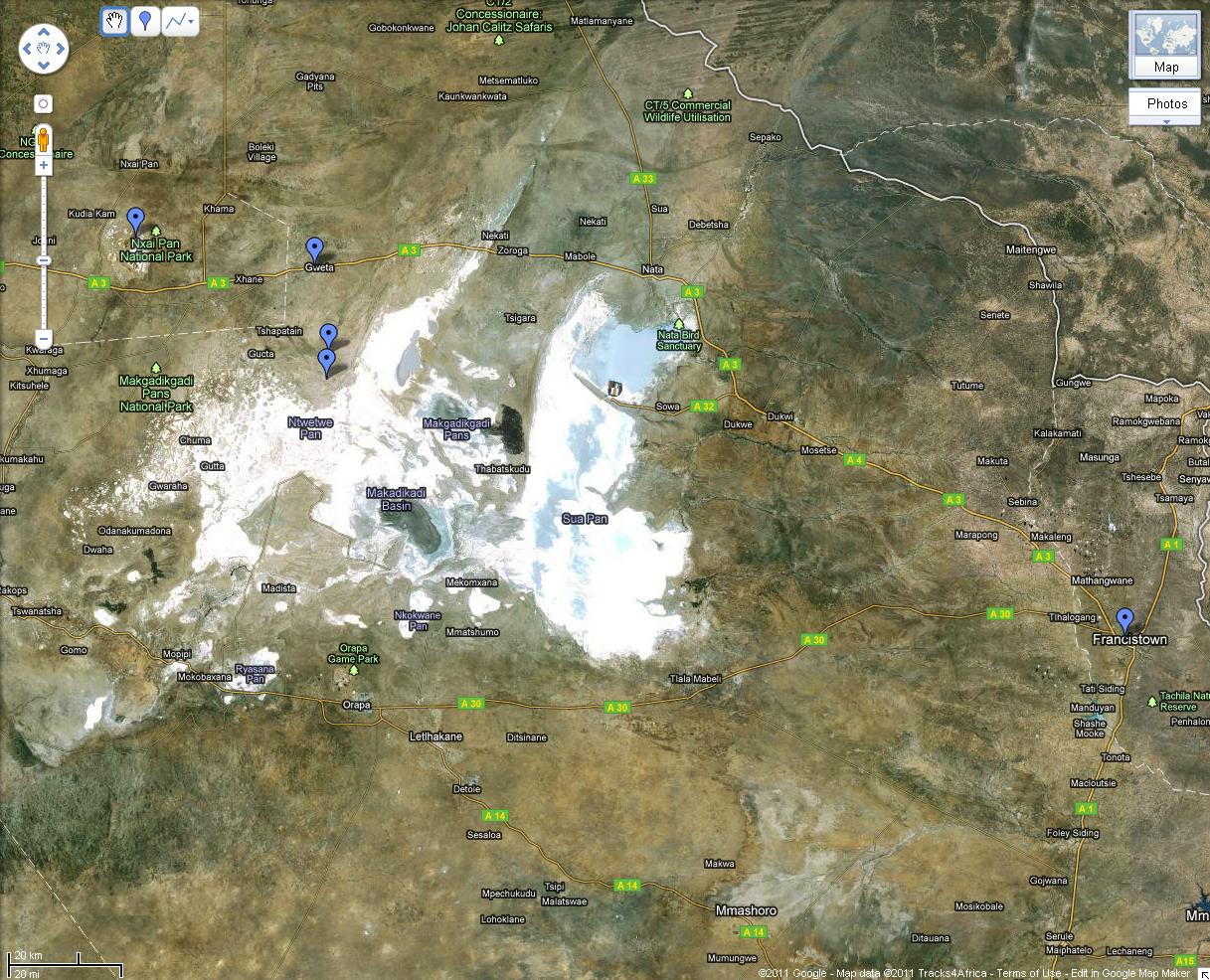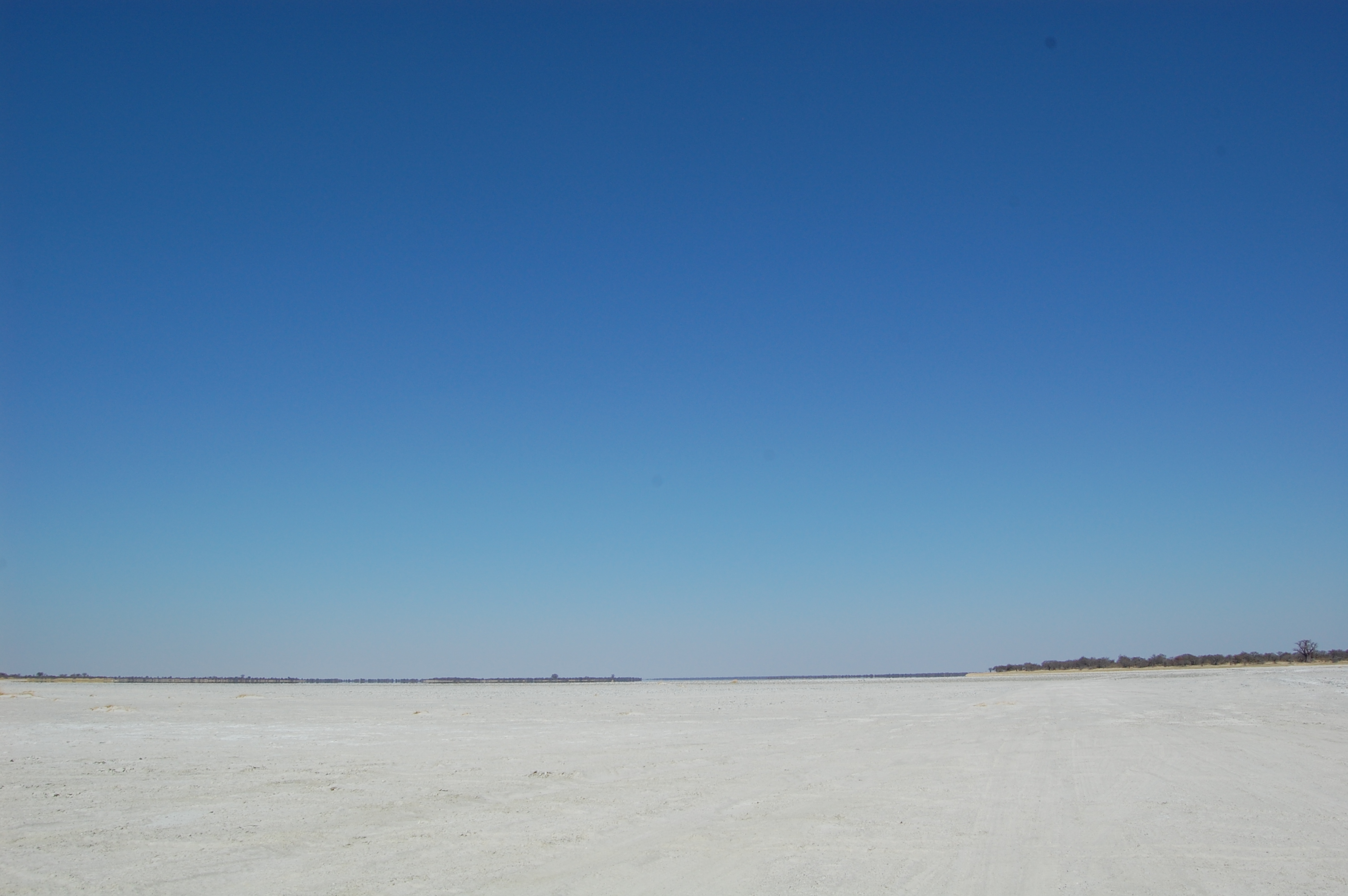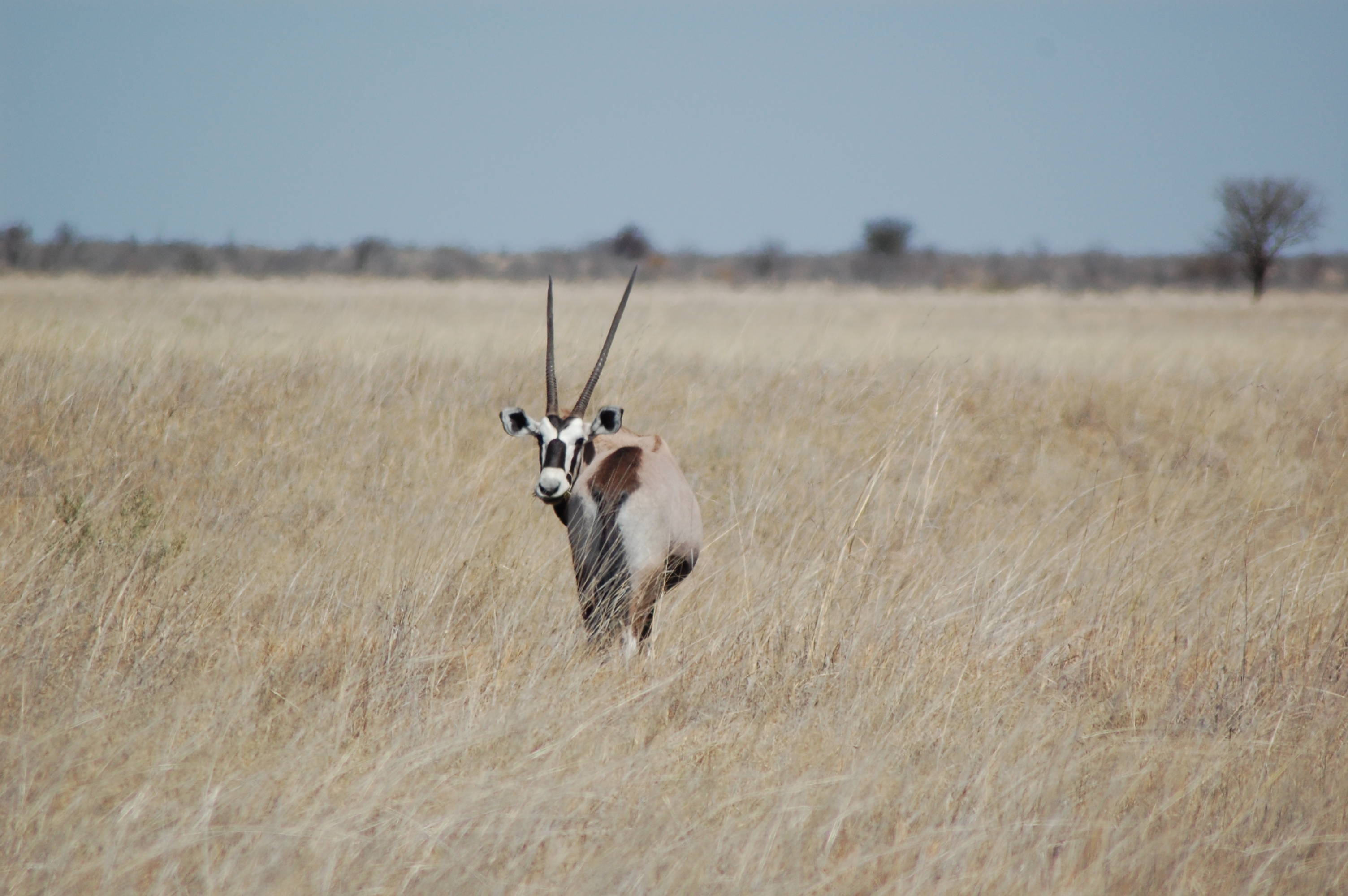On taking a recent trip to the Salt Pans through Central Botswana, we thought you might like to come along for the ride! Please note that there is no important sound to the videos, so there is no need to turn up your speakers and listen for someone talking. The only noises will be our diesel engine and the wind. 🙂
——————————
On Wednesday, we drove to Gweta and spent the night at Gweta Lodge. It was a wonderful place and we were refreshed, even though we were up and out at the crack of dawn on Thursday.
We first made our way south from Gweta toward the Ntwetwe Pan, part of the Makgadikgadi Pans in Central Botswana. Our first stop was Green’s Baobab Tree. Baobab trees are pretty incredible. They can grow for thousands of years, making them some of the oldest trees in the world. Local culture in this part of the world says that when God tasted the fruit of the baobab, He was so displeased with its sour and bitter taste, that He turned the tree upside down, leaving its roots in the sky. That’s sort of what it looks like! These huge trees provide shade, shelter, and food for many animals, and are capable of holding hundreds of liters of water, which can be tapped and used during drought.
{Click map for larger view}
{Green’s Baobab}
We then made our way further south to the Chapman Baobab Tree. This tree is named after an explorer, James Chapman, but it was here that David Livingstone would put his mail for pickup. He also received his mail in this tree. This video gives you an idea of the terrain he crossed.
{Central Botswana Terrain}
{Chapman’s Baobab}
Then we made our way back through Gweta and northwest toward Baines’ Baobabs. Along the way we saw ostrich and guinea fowl.
{Guinea Fowl}
To reach Baines’ Baobabs, we had to enter the Nxai National Park and make our way to the top northwest corner of the Kudiakam Pan. This group of seven baobabs was made famous in 1862, when famous British explorer Thomas Baines painted a picture. Comparing this picture to the trees today show that almost nothing has changed. One of the trees had fallen over at some point, long before it was painted by Baines, yet it still grows sideways, putting branches out in all directions.
Another interesting thing to note about this area is the many fossils that have been discovered – fossils that indicate a number of lake animals lived here at one time. Some scientists that you read will say this gives evidence of a large prehistoric lake that one time existed here, and this was perhaps the site of the first homo sapiens. Of course, we understand that after the Flood, water receded into huge lakes and its movements created many of the spectacular land formations that we see in our world today. Finding fossils that give evidence of a lake that one time existed here only reinforces the account of a worldwide flood.
In this following video, you can see the huge trees and part of the Kudiakam Salt Pan. If you look closely, you can see the curvature of the earth on the pans.
{Baines’ Baobabs and Kudiakam Pan}
As we were headed back to the tar road, we saw many Gemsbok, also known as Oryx. What spectacular horns they have!
{Gemsbok}
We hope that you enjoyed coming along with us! What a wonderful world our God has created!





